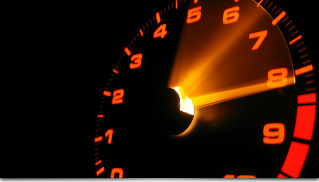 You probably know that “Redlining” an engine is a bad thing. It usually means you have punched the throttle on your car enough that the engine is spinning into the “red zone” on your tachometer. But what happens when an engine redlines, and can you really damage your engine if it occurs?
You probably know that “Redlining” an engine is a bad thing. It usually means you have punched the throttle on your car enough that the engine is spinning into the “red zone” on your tachometer. But what happens when an engine redlines, and can you really damage your engine if it occurs?
Engineers determine the maximum speed that an internal combustion engine can operate at without causing damage and they call that point the redline. The redline of an engine depends on factors such as the mass of the engine parts, composition of the parts and the interrelated balance of components.
But what happens when an engine goes into the red zone? The rate of change in piston velocity is the limiting factor. This is directly proportional to the magnitude of the G-forces experienced by the piston-connecting rod assembly as it goes up and down. As long as the G-forces acting on the piston-connecting rod assembly is less than the tensile strength of the materials they are made from, the engine can safely rev without breaking anything.
Engine redlines can vary a great deal. Very large engines, such as in trains and electric utilities can redline at just a few hundred RPM. Smaller, usually high-performance, engines such as motorcycles and sports cars normally have higher redlines. For example, the Honda CBR250 has a redline of about 19,000 rpm. Gasoline automobile engines typically will redline at around 5500 to 7500 rpm. By contrast, some older overhead valve engines had redlines as low as 4800 rpm. One main reason OHV engines have lower redlines is valve float. At high speeds, the valve spring simply cannot keep the tappet or roller on the camshaft.
The computer systems that control most modern cars prevent engines from straying too far into the redline by cutting fuel flow to the engine or by disabling the ignition system until the engine drops to a lower operating speed. This circuitry is known as a “rev limiter” and is usually set to an RPM value at redline or a few hundred RPM above.
However, even with an electronic protection system, a car is not prevented from redlining through accidental gear engagement. If a driver accidentally selects a lower gear when trying to shift up or selects a lower gear than intended while shifting down, the engine will be forced to rapidly rev-up to match the speed of the drivetrain. This is uncommon in normal driving but is a constant issue for race car drivers to be aware of.
Source: Reedman Toll Chrysler